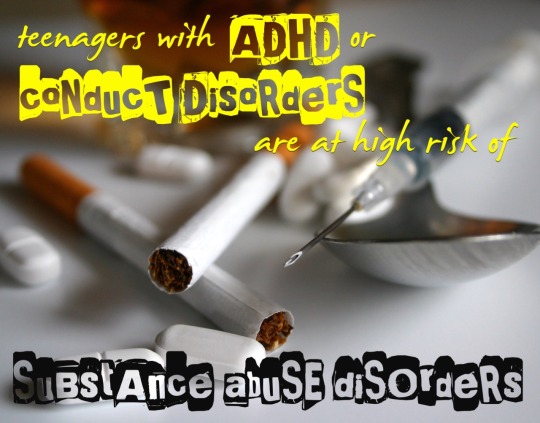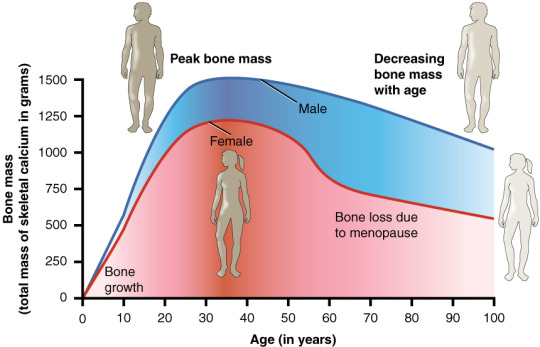#adolescentmedicine
Link
Question: What percentage of youths receive medications for opioid use disorder shortly after diagnosis, and are those who receive medications early after diagnosis more likely to remain in care compared with those who receive behavioral treatment only?
.
.
.
.
.
Findings: In this multistate cohort of 4837 youths with opioid use disorder, 1 of 21 adolescents younger than 18 years and 1 of 4 young adults aged 18 to 22 years received medication for opioid use disorder within 3 months of diagnosis. Youths who received buprenorphine were 42% less likely to discontinue treatment, those who received naltrexone were 46% less likely to discontinue treatment, and those who received methadone were 68% less likely to discontinue treatment compared with youths who received behavioral treatment only.
Meaning: Pharmacotherapy, a critical evidence-based intervention to address opioid use disorder, may be underused in youths with this disorder; those who receive medications shortly after diagnosis may be more likely to remain in care than youths who receive behavioral health services only.
#TeachingRounds#FOAMed#painmedicine#adolescentmedicine#opioids#buprenorphine#naltrexone#methadone#addictionmedicine
3 notes
·
View notes
Text

we glad to welcome #Psychiatrists, #psychologists#doctors, join us at the 34th #International#Conference on #AdolescentMedicine and Child #Psychology to be held during #March 22-23, 2023 #Vancouver, #Canada.
see more : https://childpsychology.insightconferences.com/
0 notes
Link
Service Leadership: Tools to Assess Knowledge, Attitude and Behavior
Daniel TL Shek, Ph.D. (Editor)
Department of Applied Social Sciences, The Hong Kong Polytechnic University, Hong Kong, PRC
Public Policy Research Institute, The Hong Kong Polytechnic University, Hong Kong, PRC
Department of Social Work, East China Normal University, Shanghai, PRC
Kiang Wu Nursing College of Macau, Macau, PRC
Division of Adolescent Medicine, Department of Pediatrics, Kentucky Children’s Hospital, University of Kentucky College of Medicine, Lexington, Kentucky, US
Xiaoqin Zhu, Ph.D. (Editor)
Department of Applied Social Sciences, Hong Kong Polytechnic University, Hong Kong, China
Li Lin, Ph.D. (Editor)
Research Assistant Professor, Department of Social Sciences, Hong Kong
Polytechnic University, Hong Kong, China
Joav Merrick, M.D. (Editor)
Division of Adolescent Medicine, KY Children’s Hospital, Department of Pediatrics, Lexington, Kentucky, US
National Institute of Child Health and Human Development, Jerusalem, Israel
Division of Pediatrics, Hadassah Hebrew University Medical Centers, Mt Scopus Campus, Jerusalem, Israel
School of Public Health, Georgia State University, Atlanta, Georgia, US
#serive#socialwork#service#adolescentmedicine#help#study#student#books#bookish#reading#reader#readingtime#readers#educational#educate#learn
0 notes
Photo

#Shopping MALL for #DOCTORS 👍🛒🏥 visit: www.StoresAndMarket.com #WhatAreYouLookingFor ??? #Cardiology #optometry #ophtalmology #ThoracicSurgery #UROLOGY PediatricUrology #Urology #VETERINARY #Epidemiology #Hospitalist #MedicalManagement NuclearMedicine #physician #Osteopathic Manipulative Medicine #ophthalmic #eyecare #Allergy AllergyImmunology #ClinicalLab Immunology & Allergy #Immunology #ANESTHESIOLOGY #CriticalCare Pain Management Cardiac Electrophysiology #CardiovascularDiseases PediatricCardiology #InterventionalCardiology Nuclear Cardiology #DENTISTRY Endodontics Oral & Maxillofacial Radiology Dental Public Health OralMaxillofacialPathology OralMaxillofacialSurgery Orthodontics PediatricDentistry Periodontics Prosthodontics DERMATOLOGY ClinicalLab DermImmunology Dermatology Dermatopathology PediatricDermatology Endocrinology #Diabetes #EMERGENCYMEDICINE EmergencyMedicine MedicalToxicology PediatricEmergencyMedicine SportsMedicine- EM AdolescentMedicine FamilyPractice GeneralPractice SportsMedicine- FP GERIATRICS GeriatricMedicine-FP GeriatricMedicine-IM GeriatricPsychiatry #INTERNALMEDICINE AdolescentMedicine ClinicalLaboratoryImmunology CriticalCareMedicine Gastroenterology Hematology Hepatology InfectiousDisease #InternalMedicine IMPediatrics Nephrology Nutrition PulmonaryCriticalCareMedicine PulmonaryDisease Rheumatology StoresAndMarket Best Customer Service in the Industry 1-800-303-2996 dial for your #Medicalequipment Needs (at New York, New York)
#optometry#interventionalcardiology#doctors#clinicallab#urology#internalmedicine#criticalcare#shopping#medicalequipment#veterinary#ophtalmology#medicalmanagement#anesthesiology#physician#osteopathic#immunology#epidemiology#dentistry#diabetes#ophthalmic#hospitalist#cardiovasculardiseases#emergencymedicine#eyecare#allergy#cardiology#thoracicsurgery#whatareyoulookingfor
0 notes
Photo

0 notes
Link
Question: Is long-term opioid use among family members associated with persistent opioid use among opioid-naive adolescents and young adults undergoing surgical and dental procedures?
.
.
.
.
.
Findings: In this cohort study of 346,251 opioid-naive individuals aged 13 to 21 years undergoing common surgical and dental procedures with an initial opioid prescription fill, persistent opioid use [a refill >90 days after initial fill] occurred in 453 patients (4.1%) with long-term opioid use in family members compared with 5940 patients (2.4%) without long-term opioid use in family members. [Of note, only 74.3% of patients had filled the initial opioid prescription.]
Meaning: The findings suggest that long-term opioid use among family members is associated with persistent opioid use among opioid-naive adolescents and young adults undergoing surgery and should be screened for in the preoperative period.
1 note
·
View note
Link
Anand and colleagues showed that among youth in their urban clinic, the PHQ-9 was a better screen for depression than the PHQ-2, because the latter does not ask about suicidality, only emotions. PHQ-9 scores increased as expected during the school year, while PHQ-2 scores remained stable. You have the time to ask a PHQ-9, if a teen's life is on the line.
If you or someone you know needs help for depression or thoughts about suicide, call or chat here: https://suicidepreventionlifeline.org/chat/
2 notes
·
View notes
Photo

Q. At what age is bone density the greatest?
.
.
.
A. Bone density is greatest at 25-30 years old.
Pro-Tip: Adolescence is a critical time for laying down bone density.
4 notes
·
View notes
Text
medroxyprogesterone supplementation
Due to the risk of low bone mineral density, the FDA recommends that medroxyprogesterone (Depo-Provera) not be used for more than 2 years "unless other birth control methods are considered inadequate."
Patients who use medroxyprogesterone (Depo-Provera) should consider supplementation with calcium and vitamin D--especially if they use it longer than 2 years and/or if they have other risk factors for low bone mineral density, such as immobility, low BMI, or also take anti-epileptic drugs.
3 notes
·
View notes
Link
We close this 3-week series on contraceptives and bone health in women with special needs with "An exploratory study of depot-medroxyprogesterone acetate and bone mineral density in adolescent and young adult women with cerebral palsy" by Roden et alia.
Objective: To explore whether use of depot-medroxyprogesterone acetate (DMPA) in adolescent and young adult females with cerebral palsy is associated with lower bone mineral density (BMD).
Methods: A chart review of adolescent and young adult females with cerebral palsy who had undergone dual-energy X-ray absorptiometry, comparing BMD among those with (n = 19) and without DMPA (n = 84) exposure.
Results: BMD was similar in patients with and without DMPA exposure. All patients had low BMD, with average Z-scores of less than -2 at most sites.
Conclusion: Results suggest that DMPA is not associated with lower BMD in non-ambulatory adolescent and young adult females with cerebral palsy.
DOI: 10.1016/j.contraception.2019.12.009
1 note
·
View note
Link
A recent review of contraceptives in adolescent girls suggests that long-acting reversible contraceptives (LARCs) such as medroxyprogesterone (Depo-Provera) are not as severe or irreversible as initially thought. "Concerns about bone health should not prevent use of DMPA in an adolescent who prefers this method."
Golden, "Bones and Birth Control in Adolescent Girls," J Pediatr Adolesc Gynecol (June 2020). doi: 10.1016/j.jpag.2020.01.003
1 note
·
View note
Text
"HOWEVER, the two [adolescent] cohorts were not matched at baseline for age, gynecologic age, race, BMD and other factors that influence the rate of acquisition of bone mineral density." ~FSA info on medroxyprogesterone (Depo-Provera)
Therefore, the warning about potential effects of Depo-Provera on bone health were based on low-quality evidence, and further study is needed.
1 note
·
View note
Text
FDA suggests that adolescent girls (12-18 years old) who use medroxyprogesterone (Depo-Provera) for 2 years may lose bone mineral density and still have a 5-6% deficit 2 years after stopping it.
Note: FDA does not cite the studies it used to make these recommendations; do you know what they are? Can you help us identify them?
1 note
·
View note
Photo

FDA warnings about potential effects of medroxyprogesterone (Depo-Provera) on bone health are based on two studies. One looked at adult women who used it for 5 years. It found greatest loss of bone mineral density (~5-6%) in the first 2 years of use. Most but not all of this BMD was recovered in the 2 years after stopping the drug.
Note: FDA does not cite the studies it used to make these recommendations; do you know what they are? Can you help us identify them?
1 note
·
View note
Video
youtube
#TeenHealthWeek2019 starts tomorrow!
1 note
·
View note
Photo

According to the CDC, 50% of low-income children and 66% of low-income adolescents have experienced dental cavities. They need better access to comprehensive dental medicine services. Until then, friendly reminder at the end of #TeenHealthWeek...
Image courtesy #TeenHealthWeek2019 Instagram
0 notes